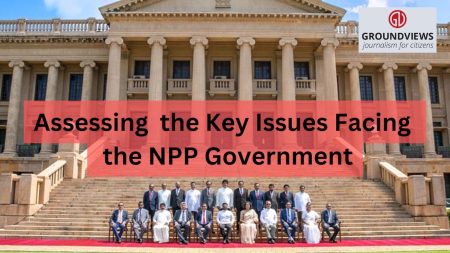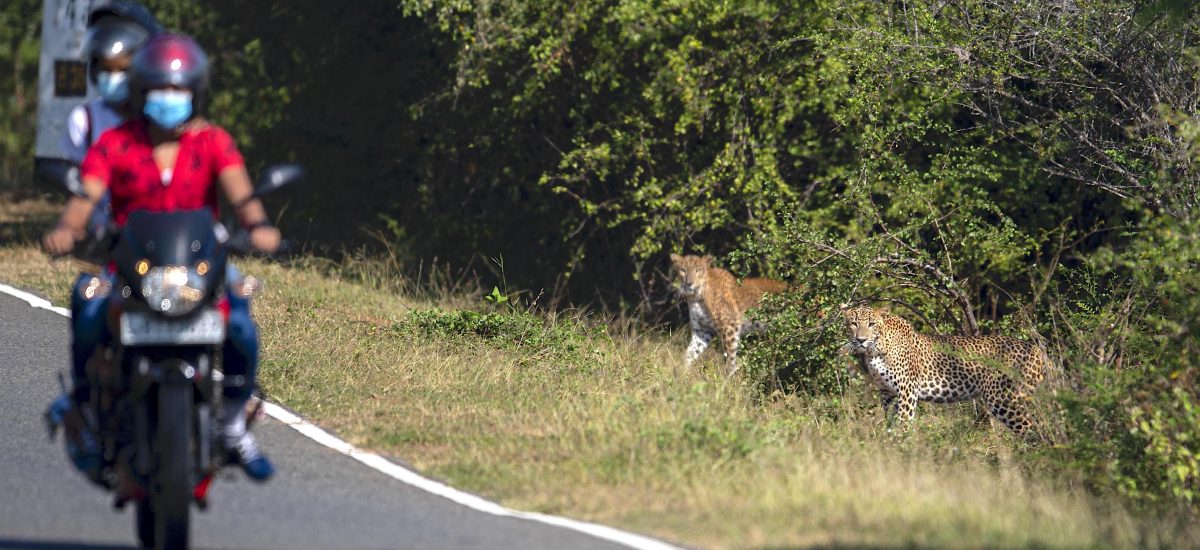Photo courtesy of Milinda Wattegedera
Sri Lanka’s future is interwoven with the fate of its natural habitats. The country must act now to preserve its rich biodiversity. The fate of its forests, wildlife and, by extension, its people, hangs in the balance. As forests continued to shrink and habitats degraded, there are far reaching consequences. The ecosystems that support life are fragile and the decisions made today will have long lasting effects on biodiversity, human welfare and economic stability.
One of the main reasons for the environmental destruction over the past years has been the corruption and greed of unscrupulous politicians and government officials. Big business interests, corrupt officials and politicians and their henchmen are wantonly destroying large tracts of forest, polluting waterways and killing wildlife. The Sinharaja World Heritage Site forest is under threat from land grabs, illegal trawling in Puttalam is destroying fish stocks, elephants die painful deaths eating garbage dumped across the country, the Anavilundawa wetland sanctuary is bulldozed overnight for prawn farming, 90 percent of Sri Lanka’s corals are dead and sand and rocks are mined continuously for mega projects; these just some of the issues environmental activists are fighting against.
The Human-Elephant Conflict results in hundreds of gruesome deaths each year – people trampled and crushed and elephants falling victim to gunshots, jaw bombs, electrocutions, poisoning and road and rail accidents. The majority of these deaths are of young animals – a gradual destruction of the future generations of the species. The lack of proactive conservation management within protected areas by those who should be doing it, habitat degradation and illegal encroachment are resulting in more and more wild animals seeking sustenance in human populated areas as they run out of food in their traditional ranges.
Many of Sri Lanka’s iconic species are coming into increasing conflict with humans due to destruction of their habitats; these same species that help attract millions of dollars’ worth of foreign revenue for the country. Numerous leopards are being killed each year, especially in the hills, as the mountain forests are being cut and encroached into. The endangered sloth bear, once avoiding human contact at any cost, is coming into areas of human habitation. This is a sign of desperation.
The excuse for this destruction is that the country needs more food production to feed itself. The answer is not to clear more and more forests but to increase the productivity of the present agricultural fields. This can be achieved using technology and science.
As part of its series on Assessing the Key Issues Facing the NPP Government, Groundviews spoke to Graham Marshall, President of the Wildlife and Nature Preservation Society of Sri Lanka (WNPS), the country’s oldest (and the world’s third oldest) nature protection society, about the urgent environmental issues facing the country.
How can the government better protect forests and wildlife habitats?
It’s important that we understand Sri Lanka, its uniqueness in terms of its habitats and biodiversity. It’s a little island, 65,000 square kilometres in land mass. We have almost ten times the size of our land mass in marine space. So you can see not only the potential but the uniqueness of Sri Lanka in terms of its biodiversity. We have about 29% of our land mass protected and just 0.3% of our marine space protected. So there’s a lot of work to do. We’re talking policy level, so then we have to talk execution. Those are the two drivers of this. We have very well-articulated policies. We have the National Plan for Environment and the National Biodiversity Strategic Assessment Plan. We have nationally determined contributions. Sri Lanka is one of the 36 biodiversity hotspots in the world. We have about 1,500 endemic plants, which is about 5% of the total endemics in the world. And conversely, 70% of the habitats that these exist are degraded. We have some great policies, written by some knowledgeable people. Why and how can we do this better? Execution. Why isn’t it happening? Who executes? There’s the Department of Wildlife Conservation, the Department of Forests and the Ministry of Environment. Conservation of forests and preservation of habitats cannot be done in isolation. The basic facets are water, yard, shelter and energy. It is only when there is an equilibrium there that there is a balance. Conservation problems are not confined or isolated to the separate institutions. We need to work in tandem. There has to be a lot of collaboration and understanding. Unless that happens, we’re going to have a problem. We need these plans. They are very well done. But the execution of these plans has to be financed. This is what is needed for better conservation. We have do strategic environment assessments, relooking at using technology, demarcating and redefining our protected spaces so then we know what can be touched and what cannot be touched. That’s how it should be approached.
What solutions can address the human-elephant conflict?
Solutions come only if you understand the root causes. About 62% of the land is being cohabited by elephants and humans. About 18% of elephants live in protected spaces while 44% are outside with humans. Why is the conflict arising? Elephants move in predetermined tracks and spaces, what we call elephant corridors. The moment you start blocking those corridors with development activity and human settlements, you are obviously going to upset that rhythm and then there is conflict. How can you stop that? The data of the corridors, spaces and protected areas need to be relooked at. There are other state forests, which are forests that are in between the jurisdiction of the Department of Forests and the Department of Wildlife Conservation. A few years ago, these were degazetted and now there is provision for the local government bodies to issue some of these plots for development, which is detrimental to any solution for the human-elephant conflict. There’s a national plan done by a group of experts. In 2020, there was a presidential task force appointed and the plan was presented. It’s all out there, the solutions are there and the suggestions. The plan needs to be looked at, updated and actioned because there is a wealth of information on elephant behaviour and also on the solutions.
How should the government stop illegal poaching and wildlife trade?
We have two good pieces of legislation. One is the Flora and Fauna Protection Act and the other is the Forest Ordinance. The provisions need to be given more teeth. The fines have to be looked at. We need more involvement from law enforcement. Sri Lanka is a signatory to CITES, which is an international agreement on endangered species. Animal trafficking is a huge problem worldwide so we have to go beyond local boundaries and collaborate trans-boundary. We don’t want to become a transit for any form of wildlife crime. We also need more awareness. We have some wildlife intelligence. People need to be aware of what’s happening around them, not only about elephants and leopards but also smaller species. Action around the legislature, awareness, intelligence and trans-boundary collaboration is necessary to mitigate this.
What policies can help Sri Lanka adapt to climate change?
We are a signatory to the Paris Agreement. We have a detailed document for adaptation and mitigation, across many sectors. It’s called the Nationally Determined Contributions Document by the Ministry of Environment, which has to be revisited. This document can’t stand alone in isolation. It is very detailed and spans across various sectors from energy to tourism to transport and conservation. There are clear, detailed actions. Policy makers need to revisit these things and look at their decisions. It’s all interrelated, all their decisions, through the lens of the plans that we have. Policy makers need to understand the value of our biodiversity and our natural capital. So that feeds into climate change, greening initiatives and looking at what you do in the cities. In our education system and the information system there has to be a lot of climate change awareness brought into curriculums. That’s another key long term plan that policy makers need to look at.
A lot of environmental degradation takes place because of political interference. What can be done to tackle this?
Political interference will happen. It’s going to be tough to say there won’t be political interference because politicians are looking to broaden their voter base. But there has to be the will. There has to be a longer term perspective. As things are being looked at afresh, we need to revisit the plans that we have. There has to be a concerted effort to do this, to value our natural capital and to look at how best we can execute. So we need a lot of political will for that. But there’s a lot of people such as the WNPS who would love to engage on how best we can get about getting results in ensuring that we have sustainable development and that our natural capital is conserved. It is a long term effort but I think it can be done. It’s just a matter of going back to the drawing boards and then thinking through the next plan.


